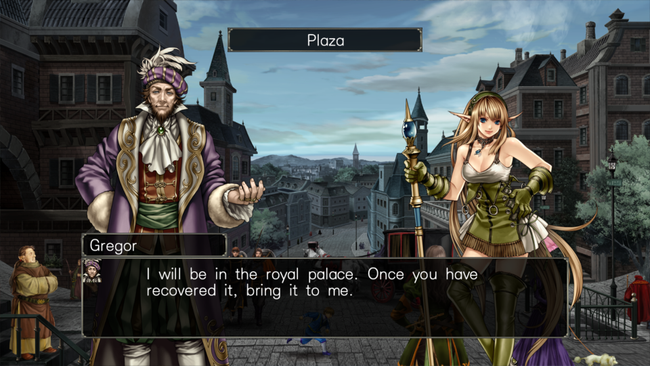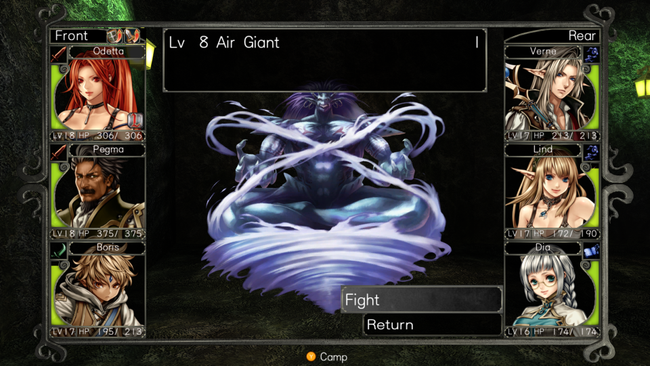
Wizardry: Labyrinth of Lost Souls Review
While I have played many recent dungeon crawler RPGs, such as the Etrian Odyssey series and its spinoffs, as well as the various games developed by Experience Inc., the Wizardry series is something I haven't yet made time to experience. Wizardry, which saw its heyday in the 80s and early 90s, is a seminal RPG series that is often cited as an influence of early entries of franchises still alive today, such as Dragon Quest and Final Fantasy.
Wizardry: Labyrinth of Lost Souls is not a part of the classic franchise, but instead a part of a later Japanese revival movement of the series, sometimes referred to casually as J-Wizardry to make a distinction. While most of these revival titles never left Japan, a few of them did receive English releases. Labyrinth of Lost Souls, originally a PlayStation 3 title, was localized by XSEED Games in 2011 and is now receiving a PC port.

At the onset of the game, you are given a choice of one of ten playable characters to choose as your party leader. There are five races (human, elf, dwarf, gnome, porklu halfling), each with a male and female option. You then set up your character and class with a typical Dungeons and Dragons style stat allocation. Once you create choose your lead, you can either recruit preset additional members to fill out your ranks or create your own.
While dungeon crawlers often have a tendency to be light on narrative, this is especially true for Labyrinth of Lost Souls. Each of the ten playable lead characters has a few-sentence introduction to their story, but otherwise, it only serves as a base motivation to party up and explore a local labyrinth in the realm of Aitox. You set up your team of six in a front and back row, and then you delve into Shiin's dungeon to start trekking its depths.
Back in 2014, I reviewed Elminage Gothic, an entry into another seldom-localized Japanese dungeon crawler series which also uses the Wizardry mould. It shares a lot in common with Labyrinth of Lost Souls except that it is a much, much more brutal game in terms of its difficulty - both encounters and dungeon design. I expected Labyrinth of Lost Souls to be a similar experience, but I instead found it to be much more simple and streamlined in comparison. Besides a somewhat tricky opening section as you get used to the game, and the final encounter, most of the rest of the game is relatively painless, especially if you are familiar with DRPGs. Those new to the genre might find the game challenging enough.
My time with Eliminage Gothic has no doubt influenced my time with Labyrinth of Lost Souls. After the former kicked me in the mouth enough, I generally learned what works and what you need to succeed in an RPG like this. But also, I figure most other dungeon crawlers will be relatively tame in comparison. However, just like Eliminage Gothic, Labyrinth of Lost Souls is largely void of tutorials and forces players to learn the game on their own. Don't expect much of anything in terms of handholding here.

One thing that is somewhat characteristic about Labyrinth of Lost Souls is that what is encountered in random battles can vary quite wildly. Sometimes you might stumble across a single kobold that poses very little threat at all. But on the same floor, you might also encounter a team of 14 enemies that might ruin you if you are not careful. Luckily, the game allows you to save just about anywhere, with an auto-save function in place as well. So, even if you are unexpectedly defeated in an unlucky circumstance, chances are you won't have lost much progress. However, the game only has one save file, so you do have to be a little careful where you choose to save. It's also worth noting that the game does not have any boss-style encounters until the very end of the plotline, which I found a bit disappointing, personally.
One of the most disappointing things of Wizardry: LoLS is that the dungeon design stays quite basic throughout almost all of the main game. On each floor of each dungeon, you traverse the usual grid-like maps in a first-person step-by-step fashion to find the stairs to the next floor. Along the way, there are a few switches you can turn which open shortcuts. While there are a few warp tiles, a few one-way arrow tiles, some anti-magic zones, and some dark-zones, the maps never get very complex or labyrinthian. There is quite a bit of symmetry and lots of open spaces throughout the dungeon, and floors are generally light on puzzles or gimmicks. In fact, the game might generally have some of the weakest map design I've seen in a dungeon crawler. To be fair, the game does offer a few extra DLC zones that work as a sort of post-game or bonus area. While I did not complete all of these zones, the ones I did check out had a little bit more going for them than the main game, though you are expected to complete the main game before you can feasibly enter these bonus zones without getting annihilated.
Labyrinth of Lost Souls is not too long of an RPG. I reached the storyline ends in about 25 hours, that time including a little bit of exploration into the optional dungeon areas. If you are a fan of dungeon crawlers, the game still generally satisfies that itch of formulating a party, filling out a map, looting better equipment, and gradually creating a stronger and stronger team. However, the game doesn't have anything that pushes it to be more than serviceable. The maps are kinda bland, the battles are somewhat samey, and for the most part, the challenge isn't there either.
One of the most strange design quirks is found in the final storyline quest of the game. Once you have already explored a majority of Shiin's dungeon, you are then tasked to find the missing king within it. This involves seeking out a sequence of events that takes place on the earlier floors of the dungeon that you've already explored, with no indication of where exactly you are looking and how many events there are to find. Effectively, the game is asking you: 'remember all those floors you already spent the time to meticulously map out? Go through them all again.' Luckily being a re-release, you can look up where you need to go to progress this final quest, but it's still just confounding quest design.

As for the PC port itself, Wizardry doesn't really need anything fancy for performance. There are options to select various 16:9 resolutions up to your monitor maximum, a borderless option, and VSYNC. The game has newly added keyboard/mouse functionality as well as native controller support for PlayStation, Xbox, and even Switch button prompts, which is nice. Even nicer is that any control option can have the button configuration rebound to the player's liking. For what it is worth, I played with a standard Xbox 360 controller with no issues.
New to the PC port is a "turbo" functionality, which is basically a button you can hold down while traversing the labyrinth that makes you move faster. It actually took me a moment to realize this was not in the original game because such a function is relatively commonplace in more modern DRPGs. It's still nice of XSEED to add that in, of course.
Wizardry: Labyrinth of Lost Souls is a serviceable dungeon crawler that doesn't have anything going for it. Being relatively simple in dungeon design and difficulty, but still containing characteristic quirks found in the genre, it might actually be a decent entry point into Wizardry style games as long as you are willing to figure things out without the help of tutorials. However, there are certainly better dungeon crawlers out there that are more worth your time.